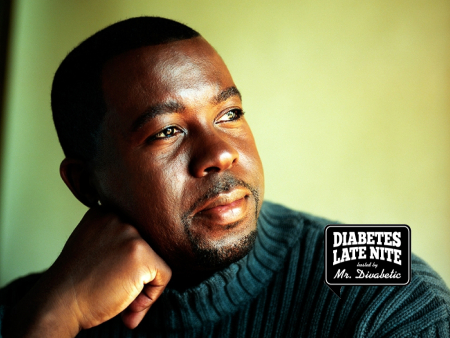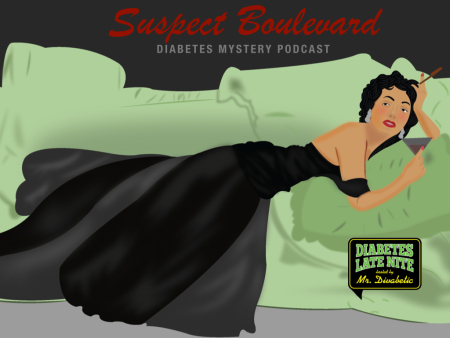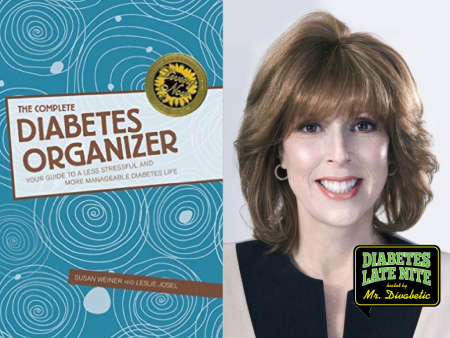
The Diabetic Pastry Chef, Stacey Harris‘s recipes are featured in this year’s diabetes mystery podcast, “Suspect Boulevard” scheduled for Tuesday, September 13, 2016, 6-7 PM, EST.
I decided to feature some ‘fabulous and healthy’ recipes in this year’s mystery podcast after reading several mystery paperbacks oozing in double fudge by authors such as JoAnne Fluke. She has sold millions of books featuring recipes for cakes, cookies and more. I don’t have anything against these books except that I think it’s high time a mystery paperback featured some delicious, healthy recipes.
This year’s diabetes mystery podcast, “Suspect Boulevard” features recipes by Stacey Harris, The Diabetic Pastry Chef to you show how to entertain like a ‘diva’ without jeapordizing your diabetes health so I contacted Stacey Harris, the Diabetic Chef for some help.
Stacey published “The Diabetic Pastry Chef” (Pelican, $24.95), a collection of more than 200 recipes that fit within the nutritional limits of the diabetic diet. Her mission is to show the more than 20 million people with diabetes in the U.S. that you can have your cake and eat it, too, without sacrificing flavor.
In one scene of ‘Suspect Boulevard’ there’s a glamorous book launch party for Best-Selling Author Marjorie Melbourne Blaze’s newest novel, “Fires of Desire.” Of course, there’s more to Marjorie’s book than meets the eye. Why not sit back and listen to our podcast while you’re enjoying Stacey Harris ‘s delicious “Fires of Desire” Mini Victoria Cakes recipe.
‘Fires Of Desire’ Mini Victoria Cakes
3/4 cup butter, softened
3/4 cup Whey Low D Granular
3 eggs, room temperature
1 tsp pure vanilla extract
1 1/4 cup King Arthur Cake Flour Blend
1 tsp baking powder
1/2 tsp salt
sugar- free or no sugar added strawberry or raspberry jam
whipped cream
Whey Low Powder or confectioner’s sugar for dusting
Fresh raspberries for garnish
With mixer beat together the butter and Whey Low for 3 minutes. Add eggs one at a time, beating well after each. Add vanilla and beat for an additional 2 or 3 minutes. Sift the dry ingredients into the mixing bowl. Gently fold with spoon just until combined and smooth. Spoon mixture int 12 greased muffin tins. Bake until toothpick inserted in center comes out clean, about 15 minutes. Remove from oven and cool. Remove from pan. Split each cake in half. Spread with jam, top with a little whipped cream. Sandwich the cakes and sift powdered Whey Low or confectioner’s sugar on top. Top each with a raspberry or small strawberry.

DON’T MISS: Suspect Boulevard on Tuesday, September 13, 2016, 6-7 PM, EST. Our third annual Diabetes Mystery Theater Podcast, ‘Suspect Boulevard’ revolves around dogs, dementia, diamonds and diabetes. This special mystery theater production is loosely based on Billy Wilder’s film, Sunset Boulevard. Guests include: Poet Lorraine Brooks, Patricia Addie-Gentle RN, CDE, ‘We Are Diabetes’ organization founder, Asha Brown, Catherine Schuller AICI, CIP, Susan Weiner MS, RD, CDE, CDN, ‘Good Like This’ Author Peter Arpesella and Mama Rose Marie.
Throughout the podcast we will spotlight the wonderful music by the National Philaharmonic Orchestra under the direction of Charles Gerhardt courtesy of SONY MUSIC.
The happy healthcare host, Mr. Divabetic hopes to inspire you to become a Diabetes Detective will this third installment of Diabetes Mystery Theater podcast.
Save
Save
























